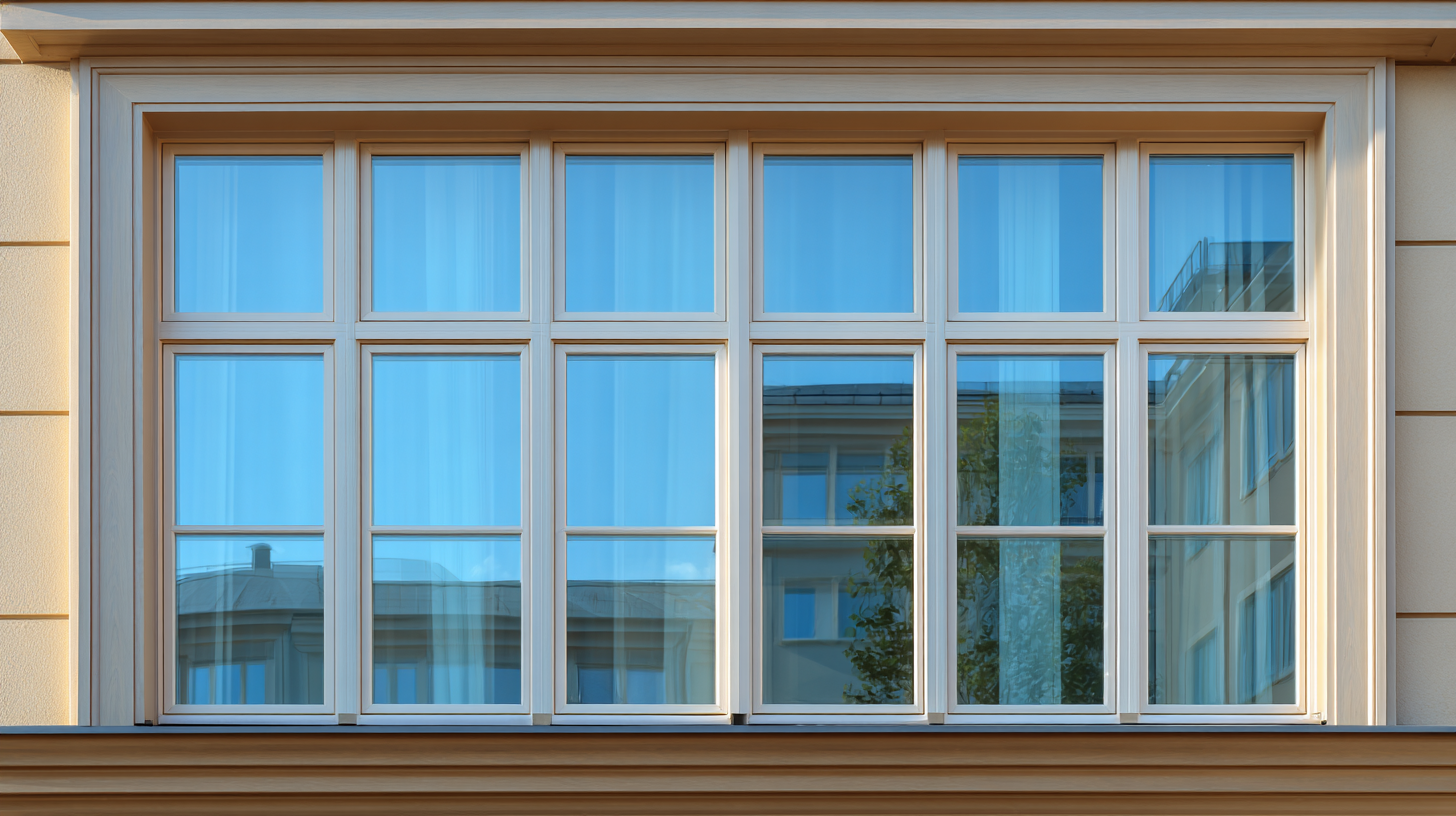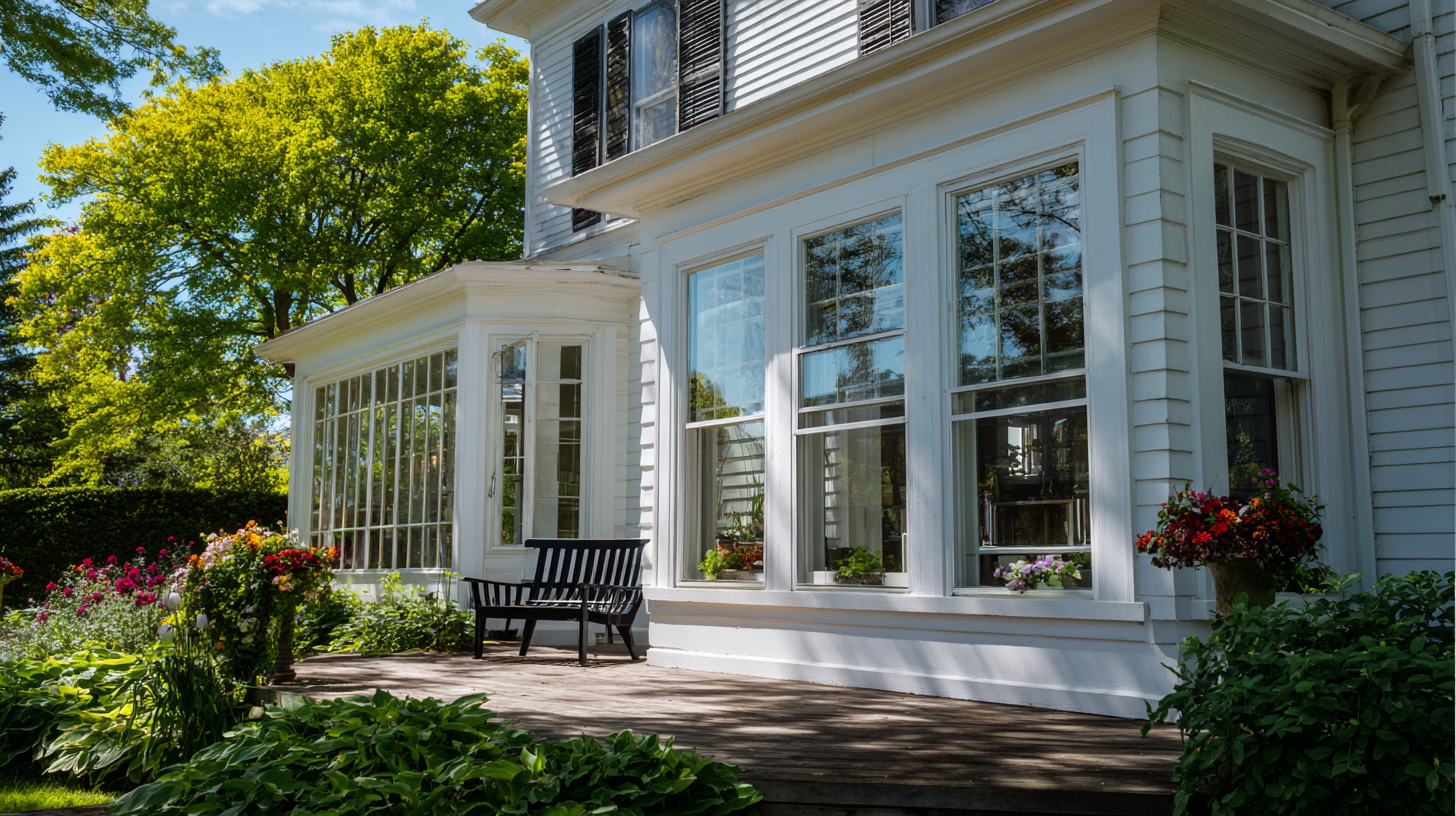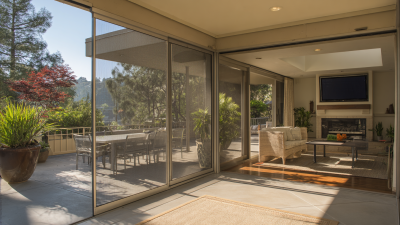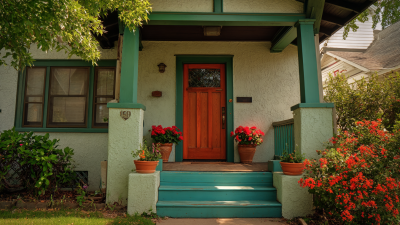The Ultimate Guide to Choosing the Best Exterior Storm Windows for Your Home
When it comes to enhancing the energy efficiency and resilience of your home, choosing the right exterior storm windows is crucial. According to the U.S. Department of Energy, properly installed storm windows can increase energy savings by as much as 12% annually, showcasing their significant role in reducing heating and cooling costs. The market has seen a surge in demand for these windows, driven by homeowners seeking effective solutions for temperature regulation, noise reduction, and protection against harsh weather.

With a variety of materials, styles, and installation options available, understanding the key factors that contribute to choosing the best exterior storm windows is essential. This guide will provide you with the insights needed to make an informed decision, ensuring your investment enhances both the comfort and value of your home.
Understanding the Importance of Exterior Storm Windows for Home Protection
Exterior storm windows play a crucial role in protecting your home from various environmental elements. They provide an additional layer of insulation, helping to maintain a comfortable indoor temperature regardless of the weather outside. This insulation not only enhances energy efficiency but also reduces heating and cooling costs, making storm windows a financially sound investment for homeowners. Beyond energy savings, these windows serve as a barrier against wind, rain, and debris, significantly minimizing potential damage during severe weather events.
Additionally, the presence of exterior storm windows can improve your home's overall safety and security. By adding an extra layer of glass, these windows can deter intruders and make it more difficult for them to gain access to your home. Moreover, they can enhance the durability of your existing windows, reducing the risk of shattering and related injuries. As such, understanding the importance of exterior storm windows is essential for any homeowner looking to enhance both the protection and efficiency of their living space.
The Ultimate Guide to Choosing the Best Exterior Storm Windows for Your Home
| Window Type | Material | Energy Efficiency Rating | Price Range | Average Lifespan |
|---|---|---|---|---|
| Double-Hung | Vinyl | R-5 | $150 - $300 | 20 years |
| Casement | Aluminum | R-6 | $200 - $400 | 25 years |
| Sliding | Fiberglass | R-7 | $180 - $350 | 30 years |
| Fixed | Vinyl | R-5.5 | $120 - $250 | 15 years |
| Awning | Wood | R-6.5 | $300 - $500 | 20 years |
Evaluating Different Types of Storm Windows: Material and Style Options
When selecting the best exterior storm windows for your home, it's essential to evaluate the various material and style options available. Common materials include aluminum, vinyl, and wood, each offering unique benefits. According to the U.S. Department of Energy, well-installed storm windows can reduce energy costs by up to 50%, making material choice critical for efficiency. For instance, aluminum storm windows provide durability and are low-maintenance, while vinyl options offer excellent insulation properties and weather resistance.
In terms of style, homeowners can choose from various designs such as full-frame, insert, and removable storm windows. The American Society of Home Inspectors notes that proper installation and style selection can significantly impact a window's performance, enhancing both aesthetic appeal and energy efficiency.
**Tip:** When choosing a style, consider the architectural integrity of your home. Full-frame storm windows may be ideal for older homes with unique designs, while insert options work well for modern or contemporary styles.
Another important factor is the overall window thickness. According to the National Fenestration Rating Council, storm windows with thicker glass provide better insulation and noise reduction, which is especially beneficial in urban areas.
**Tip:** Look for models with a low U-factor for improved thermal performance, ensuring your investment pays off in long-term energy savings.
The Different Types of Storm Window Materials
Key Features to Look for When Selecting Storm Windows for Energy Efficiency
Choosing the best exterior storm windows for energy efficiency is crucial for homeowners looking to enhance their home's resilience against extreme weather while reducing energy costs. When selecting storm windows, prioritize features such as insulation capability, which helps to minimize heat loss during colder months and keep your home cooler in the summer. Look for double or triple-pane glass options since these provide superior thermal performance compared to single-pane windows. Additionally, frames made from materials like vinyl or fiberglass can offer enhanced durability and energy efficiency.

Another essential consideration is the window's air leakage rating. Effective storm windows should create a tight seal against drafts, thus improving overall energy efficiency and comfort within the home. Incorporating low-emissivity (low-e) coatings on the glass further enhances insulation by reflecting heat back into the room during winter and blocking harmful UV rays in the summer. By focusing on these key features, homeowners can ensure that they select storm windows that not only protect their homes but also contribute to a more sustainable living environment.
Installation Considerations: DIY vs. Hiring a Professional for Storm Window Setup
When considering the installation of exterior storm windows, homeowners face a crucial decision: whether to undertake the project as a DIY endeavor or to hire a professional. According to a report by the Remodeling 2021 Cost vs. Value, professional installation typically adds substantial value, not just in terms of aesthetics but also in long-term durability and efficiency. Professionals bring years of experience and specialized tools that can mitigate the risks associated with improper installation, which can lead to air leaks and reduced energy efficiency.

Conversely, a DIY approach can be attractive to budget-conscious homeowners. The average cost for storm window installation can range from $200 to $800 per window, depending on materials and labor. However, a study by the National Association of Home Builders shows that homeowners who install storm windows themselves save approximately 10-20% in labor costs, providing immediate financial benefit. It is essential to weigh these potential savings against the expertise and warranty that professional installers often provide, ensuring that the investment translates into optimal performance and energy efficiency.
Maintenance Tips to Ensure Longevity and Performance of Your Storm Windows
When investing in exterior storm windows, maintenance plays a pivotal role in ensuring their longevity and optimal performance. According to the American Architectural Manufacturers Association (AAMA), proper maintenance can extend the lifespan of storm windows by up to 20 years, significantly enhancing your home’s energy efficiency. Regularly inspecting frames for signs of wear and tear, such as peeling paint or signs of moisture intrusion, can prevent more extensive damage that may require costly repairs.
Cleaning storm windows is another essential maintenance practice. A study conducted by the National Fenestration Rating Council (NFRC) indicates that dirty windows can reduce energy efficiency by up to 30%. Homeowners should clean the glass surfaces with a mild detergent and a soft cloth to eliminate dirt and grime while checking seals and weather stripping for any deterioration that could compromise insulation.
Furthermore, lubricating hinges and latches at least once a year can ensure smooth operation and prevent rust, promoting the windows’ overall durability and functionality. By adhering to these maintenance tips, homeowners can ensure their storm windows provide lasting protection against the elements while enhancing comfort and energy savings.
Related Posts
-

Why Choosing Aluminum Screen Doors Can Enhance Your Home's Comfort and Style
-

Transform Your Home's Comfort: The Benefits of Installing Aluminum Screen Doors
-

How Storm Doors Can Enhance Your Home's Energy Efficiency and Security
-

Exploring the Impact of Window Places on Indoor Air Quality: A Comprehensive Review
Our Location
476 Main Street - Route 28
Dennisport, MA 02639
Business Hours -
- Mon - Fri
- -
- Saturday
- -
- Sunday
- Closed

Share On: